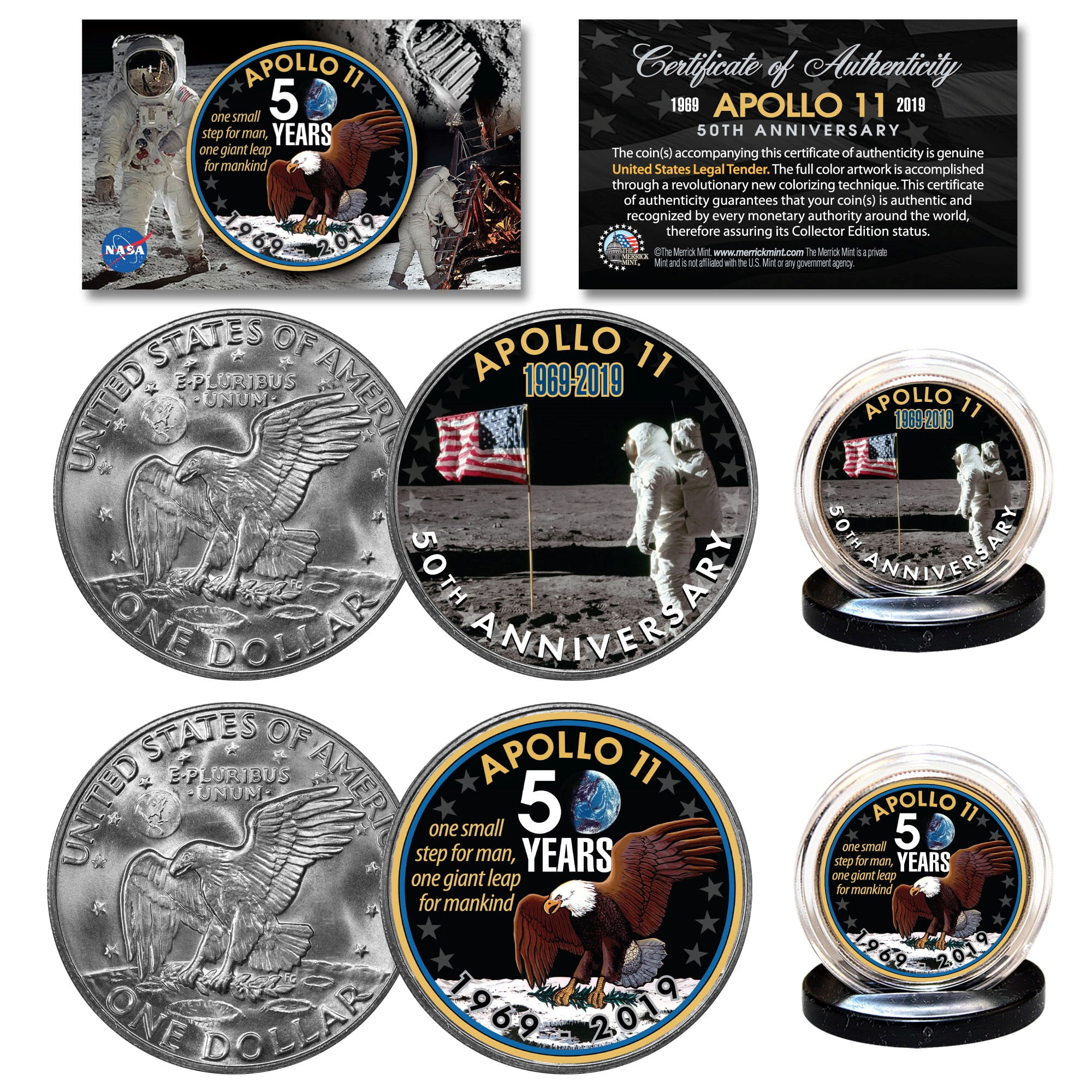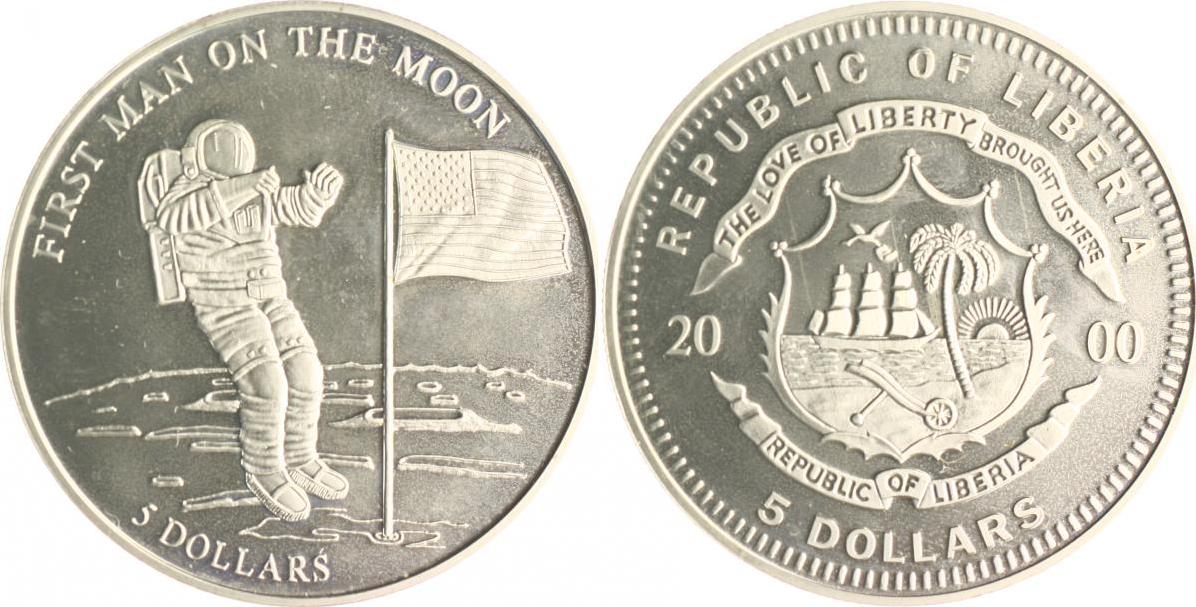
commemorative coin program since the Baseball Hall of Fame issue, with over 600,000 Apollo 11 coins sold. It was nevertheless the most successful U.S. This did not prove to be the case, and none of the coins sold out before sales ended on December 27, 2019. issue of curved pieces, the 2014 National Baseball Hall of Fame coins.

Prior to the release date of January 24, 2019, there was anticipation that some denominations might sell out, as had occurred with the previous U.S. The Apollo 11 coins are curved, so that the obverse is concave and the reverse is convex.

coin who was alive at the time the coins were struck. The depiction of Aldrin made him the seventh individual to appear on a U.S. This is based on a well-known photograph taken by Armstrong, and was created and engraved by Phebe Hemphill of the Mint. Flag and the Apollo Lunar Module Eagle in the reflection. The reverse, as mandated by Congress, depicts the visor and surrounding helmet of Aldrin's space suit, with Armstrong, the U.S. That design is by Maine sculptor Gary Cooper, with engraving by Joseph Menna of the Mint.

The obverse depicts a bootprint on the lunar surface, based on a photograph taken by Aldrin. The gold coins were struck at the West Point Mint, the silver at the Philadelphia Mint and the base metal half dollars at the mints in Denver and San Francisco.Īll four coins have the same design. Consisting of a gold half eagle ($5 coin), two different sizes of silver dollars, and a copper-nickel clad half dollar, each of the four was issued in proof condition, with all but the larger silver dollar also issued in uncirculated. The Apollo 11 50th Anniversary commemorative coins were issued by the United States Mint in 2019 to commemorate the 50th anniversary of the first crewed landing on the Moon by Apollo 11 astronauts Neil Armstrong and Buzz Aldrin.


 0 kommentar(er)
0 kommentar(er)
